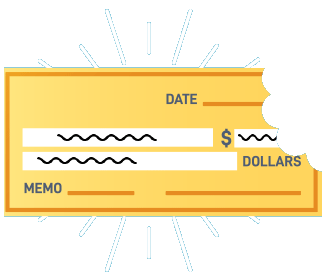
Funded Status:
America's $1.4 trillion pension problem
Share the Challenge
Email
Understanding funded status in public pension plans

Funded status measures how much money a plan should have
Money in the fund is compared to how much money it needs to pay retiree benefits, plus costs to run the fund. With fully-funded status, pension plans would have enough money for today while also investing for the future.

Both public employees and employers make contributions
Plans have different contribution structures, but the concept is the same: contributions are added to the fund each year on behalf of working employees to pay for future pension benefits. These contributions are critical in determining funded status.

Pension plans invest these contributions
Pension boards works with advisors to invest their assets in stocks, bonds, hedge funds, real estate, and more. Returns on these investments are also critical to funded status since the pension plan counts on a minimum return each year.

Funded status has declined nationally since 20012
Although factors differ by state, the general trend for public pension funded status has been downward for nearly 20 years. Most plans haven’t built up enough money to pay all benefits to retirees in the future.
Today, America faces a $1.4 trillion funded status shortfall.
Pensions are still being paid to retirees. But with a $1.4 trillion shortfall, pension plans nationwide lack those assets — and their investment returns — which then pay future benefits. It’s like being short on ingredients to make more retirement pies.
How did this happen?

Investment returns have fallen short
For decades, pension funds assumed they’d earn 7% to 8% on their investments. But even with good years, most pension funds made less than anticipated; in the past 10 years, public pensions have only returned an average of 5.3%.3 What’s behind this?

New debt is being added as old debt lingers
As pension debt has grown, many states have opted to spread out debt payments over time. “Backloading” these debt payments have made pension costs even more expensive.

People are living longer than originally expected
The average U.S. lifespan in 1979 was 73.8 years.4 Today, it’s 78.7 years.5 Many plans did not anticipate this kind of change. And this makes the shortfall larger.

States have not consistently paid pension bills
You understand it’s important to pay your bills. But some states have not adopted that kind of fiscal discipline, skipping out on part of what they should be contributing to their pension funds each year.

Pension plans are playing catch up – and it’s impacting you.
In 2001, the average public employee contributed 5.2% of their income to their pension plan. Today, that average is up to 6.3%.6 This increase takes a bigger bite out of pay, and makes any raise feel less meaningful.
Who else feels the funded status challenge?

Retirees
Some plans are reducing or eliminating cost-of-living adjustments. Most pension funds continue to pay out full benefits to current retirees, but retirement security will slowly erode with inflation making things more expensive to buy.

Taxpayers
As pension debt rises, some states and cities have had to raise property and sales taxes. Whether you’re working or retired, this means less money for everyday living.

Society at large
Funding for roads, schools, parks and environmental programs, public housing and other municipal services are being cut as pension debt takes a bigger bite from public budgets.
Learn more about funded status challenges nationwide
In 2017, pension costs accounted for 4.7% of state and local government spending — up 104% since 2002.7 While these challenges and others are large, you can do something about it — and it starts by learning more.
Let's fix this together.
Solving the challenges of funded status nationwide will take active, engaged voices calling for change.
Share with a friend
Help amplify our message by spreading the word through your favorite social media channels.
Learn more
Equable is committed to helping you learn more about the challenges facing pensions today.
Connect with us
At Equable, we’re working with employees, employers, policy makers and others to address the funded status challenge and create real retirement plan sustainability and affordability.
1As reported by state-administrated pension plans using their accounting methods. Including the largest city and county managed pension plans increases the total current shortfall to around $1.6 trillion.
2Equable Institute analysis of public pension plan financial reports and data from the Public Plans Database
3Equable Institute analysis of public pension plan financial reports and data from the Public Plans Database
4The World Bank, "Life Expectancy at Birth, Total (Years) - US," 1960-2017
5Fortune, “U.S. Life Expectancy Declines for Second Year,” 2017
6Equable Institute analysis of public pension plan financial reports and data from the Public Plans Database
7NASRA, State and Local Government Spending on Public Employee Retirement Systems, 2019

